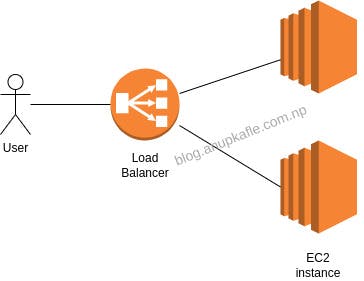
Photo by Marvin Meyer on Unsplash
"Scaling Microservices with AWS: Challenges Faced and Overcoming Them"
Microservices have become increasingly popular, allowing developers to break down complex applications into smaller, more manageable pieces. However, with the rise of microservices, scaling them has become a significant challenge. This is where Amazon Web Services (AWS) comes in. AWS provides a suite of tools that can help developers quickly scale microservices. This blog post will discuss some challenges i faced when scaling microservices and how AWS can help overcome them.
Challenge #1: Service Discovery
In a microservices architecture, services need to communicate with each other, but as the number of services grows, it becomes challenging to manage and discover them. Service discovery is crucial for scaling microservices, and AWS solves this problem with Amazon Elastic Container Service (ECS). ECS is a container orchestration service that allows developers to manage, deploy, and scale Docker containers. ECS includes Amazon ECS Service Discovery, which allows services to discover and communicate with each other easily. ECS Service Discovery automatically registers new services and updates DNS records, making it easy to scale microservices without worrying about the underlying infrastructure.

Challenge #2: Load Balancing
Load balancing is another critical challenge when scaling microservices. AWS offers Elastic Load Balancing (ELB), a managed load balancing service that automatically distributes incoming application traffic across multiple targets, such as EC2 instances, containers, and IP addresses. ELB includes Application Load Balancer (ALB), which allows developers to route traffic based on content, URL, or IP address. ALB also provides features like SSL termination, health checks, and sticky sessions, making it easy to scale microservices without worrying about load balancing

.
Challenge #3: Auto Scaling
Auto Scaling is a critical challenge when scaling microservices. AWS offers Auto Scaling, a service that automatically adjusts the number of EC2 instances or containers in response to changes in demand. Auto Scaling allows developers to set minimum and maximum thresholds for the number of instances or containers. It can automatically scale up or down based on CPU utilization, network traffic, or application metrics.

.
Challenge #4: Monitoring and Logging
Monitoring and logging are essential for scaling microservices. AWS provides CloudWatch, a monitoring and logging service that allows developers to collect and track metrics, collect and monitor log files, and set alarms. CloudWatch provides detailed insights into application performance and helps developers diagnose and troubleshoot issues quickly. With CloudWatch, developers can confidently scale microservices, knowing they can monitor and log applications at scale.

Challenge #5: Security
Security is another critical challenge when scaling microservices. AWS provides several security services, including Amazon Virtual Private Cloud (VPC), which allows developers to create a virtual network isolated from the internet and other AWS resources. VPC allows developers to set up security groups and network access control lists (ACLs) to control inbound and outbound traffic to and from their microservices. AWS also offers AWS Identity and Access Management (IAM), which provides granular control over who can access AWS resources and what actions they can perform.

Conclusion
Scaling microservices can be challenging, but with the tools and services provided by AWS, it can be made much more manageable. This blog post discussed some challenges when scaling microservices and how AWS can help overcome them. By leveraging AWS services such as ECS, ELB, Auto Scaling, CloudWatch, and VPC, we developers can confidently scale microservices, knowing they have the tools they need to ensure their applications perform reliably and securely.

